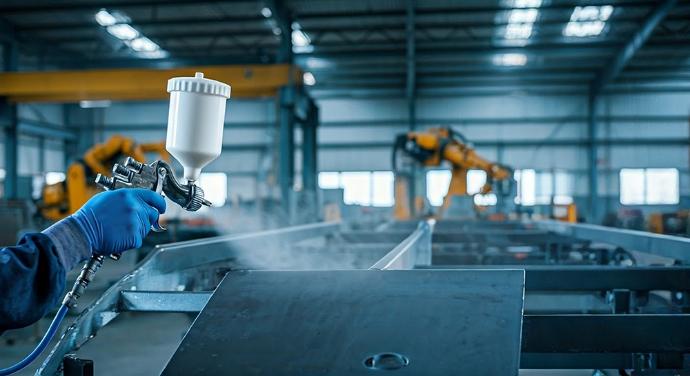In modern manufacturing, automatic spray guns have
become key tools for boosting productivity and quality. Whether in automotive,
home appliances, electronics, furniture, or aerospace industries, industrial
spray coating operations rely on automated systems to achieve high-speed,
high-precision, and high-consistency coating requirements. This article
provides an in-depth look at how automatic spray guns work, selection
strategies, industrial application solutions, maintenance practices, and future
technology trends, helping businesses find the most suitable spray solutions.

Why Choose Automatic Spray Guns?
Compared to manual spray guns, the biggest advantages of automatic spray guns are stability, speed, and repeatability. They can operate for long hours, maintaining consistent output through preset parameters and automated control, reducing human error and ensuring every product meets high standards.
Additionally, automatic spray guns can:
- Reduce labor costs and training needs
- Minimize material waste and improve transfer
efficiency (HTE, HVLP technology)
- Increase production line output and stability
- Lower occupational safety risks (e.g., solvent
exposure)
How to Select the Right Automatic Spray Gun
Before implementing automatic spray guns, companies should evaluate these key factors:
- Coating Material: Whether solvent-based, water-based, powder, adhesive, or specialty coatings, each requires different gun materials and designs.
- Production Line Characteristics: Are you using continuous conveyor lines, rotary tables, or multi-axis robots? Each setup affects installation and control requirements.
- Coating Requirements: Thickness, gloss, uniformity, and edge sharpness all influence gun model selection and parameter settings.
- Smart Integration Capability: Does the system need to
connect with sensors, PLC control, or data monitoring and analysis to meet
smart manufacturing standards?
Industrial Application Scenarios
- Automotive Industry: Multi-layer spraying (primer, topcoat, clear coat) on car bodies requires high adhesion and durability while avoiding color mismatch and sagging.
- Electronics Industry: Protective coatings for circuit boards, heat sinks, and components demand extreme precision and ultra-thin layers.
-
Furniture Manufacturing: Coating and finishing on
wooden or metal furniture requires fine texture and scratch resistance.
- Food and Packaging: Protective films, labeling sprays,
and package coatings emphasize hygiene and high-speed processing.
Designing High-Efficiency Industrial Spray Solutions
Precise Parameter Control
Multi-Axis Robot Integration
Multi-Gun Collaborative Systems
Smart Monitoring and Data Analytics
Best Practices in Maintenance Management
- Check nozzle and needle valve status every shift to avoid clogging and wear
- Clean pumps, filters, and lines daily to prevent residue buildup
- Perform weekly deep maintenance, including disassembly, seal checks, and lubricating moving parts
- Implement preventive maintenance systems that use
operational data to predict issues early
Future Trends and Innovation Directions
- Low-VOC, Eco-Friendly Coating Compatibility
- AI-Driven Adaptive Adjustment
- Modular Design
- Cloud Data Integration